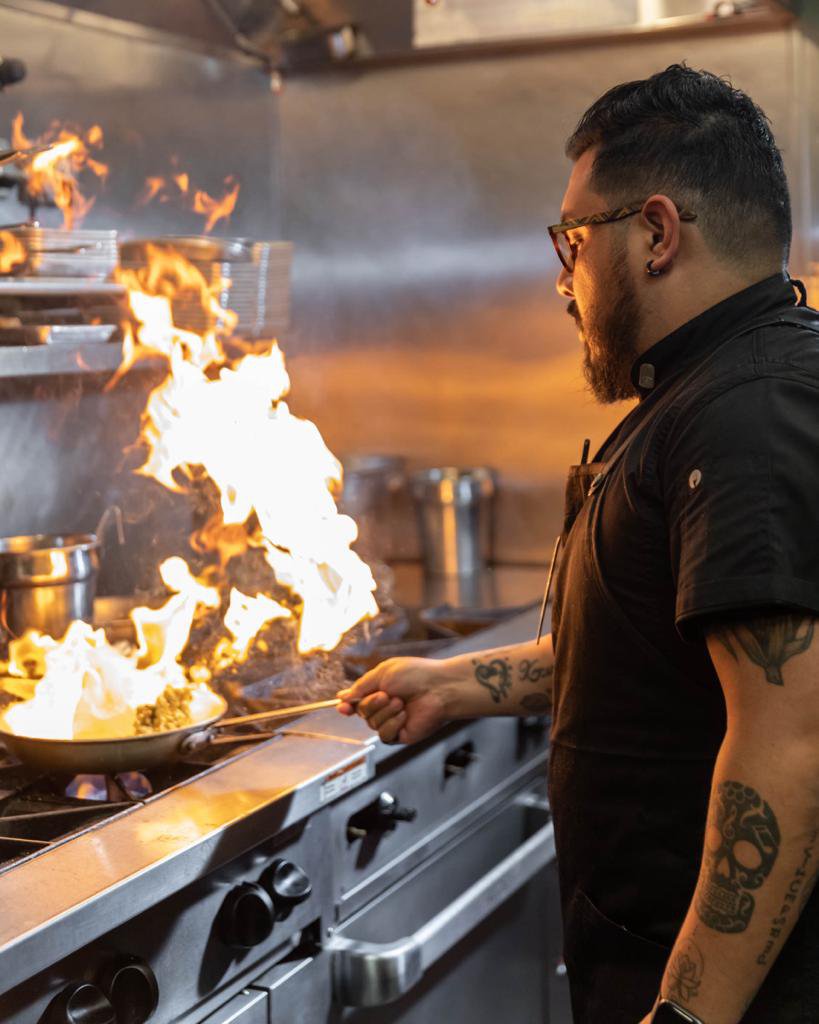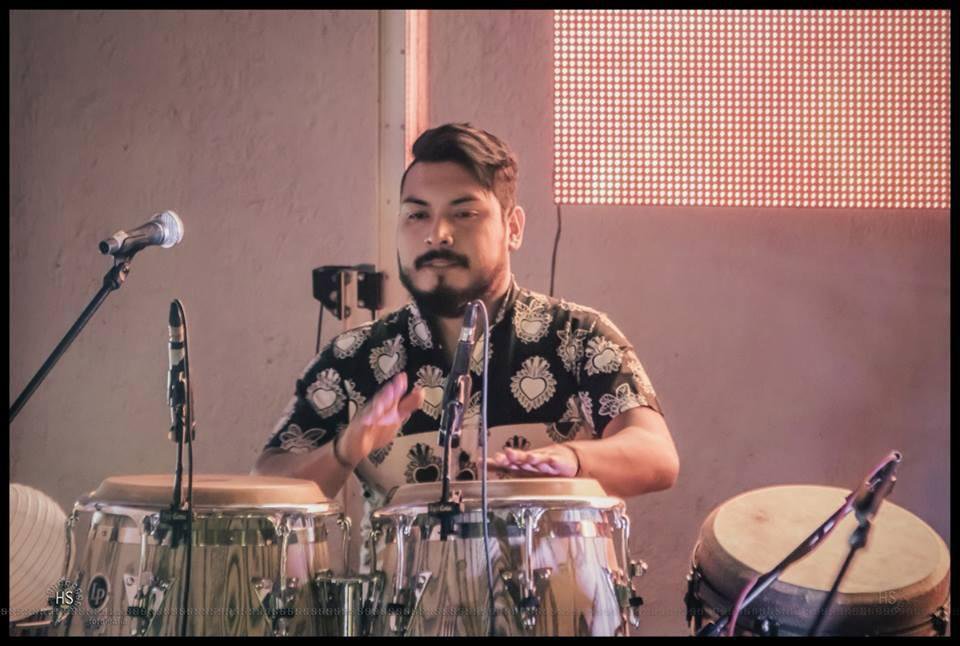Haz clic aquí para leer esto en español
By Natalia Otero
Maizano is a new restaurant in Costa Mesa, California, helmed by Chef Alan Sanz. It opened in November, and as he describes it, this will be the project of a lifetime, as it combines his love for the cuisine of the Mexican Southeast with an intimate team, or "paisanos," as they call them in Mexico, and music.
Sanz brings a secret weapon to the kitchen: synesthesia. Synesthesia is an attribute some individuals have in which their brain routes sensory information through multiple unrelated senses, causing them to experience those senses simultaneously.
Sanz’s Synesthesia
"Synesthesia is usually more visual than auditory, but, in my case, it's more auditory. I started to realize that I saw people and I tasted things, since I was three years old. But, above all, it happened when I heard songs and tasted spices that were not available in Mexico. I could feel their textures and aromas in my mouth," he explains.
He doesn't feel full, but the taste sensation can last as long as a song. The brain chews for him. That's why, for Sanz, cooking and music are universal languages.
Every day since he was six years old, Alan has been devoted to music. His father is a music lover and Sanz, from an early age, developed skills as a musician... but, he ended up being a chef.
"From the first moment I get up, everything is music: I get in the car and play music very loud; before service, I play music; when we close, we play music; I get home and I listen to music or play about 30 or 40 minutes before going to sleep," he says.
What Do Music and Cooking Have to Do With His Life?
When he learned about instruments and sound, Sanz discovered flavors.
One day, at the age of three, when he was with one of his little friends, he heard the child’s voice and it “tasted” like milk with aniseed, although he had not yet tasted aniseed. At that time, he was not familiar with many flavors or ingredients, but he could already tell that certain noises provoked a sweet, sour or bitter taste.
“We Will Rock You” by the rock band Queen, tastes like crackers. Another song called “La Mala,” by the Mexican group La Garfield, tastes like figs with blue cheese. His favorite song is “Canción Animal” by the Argentinean group Soda Stéreo, and this one tastes like carne asada, with a lot of spicy black sauce.
Today, after more than 15 years as a chef, he is familiar with countless flavors and knows ingredients from all over the world, including ingredients that he knew many years before he actually tasted them. Making a dish for Sanz is like cooking a song. Since living in the United States, working as a chef, his synesthesia has amplified.
"I came to cooking as a teenager as a rebel. My parents told me to get to work, as I wasn't doing anything. I went to a hotel as a dishwasher and, on the restaurant’s anniversary, they invited a chef. I saw the chef’s uniform, I saw how he directed things, and he seemed to me like a musician, like a musical director. I related it to music and it's true that cooking is like conducting an orchestra," Sanz recalls. It was at that moment that music and cooking combined in his life.
He decided to pursue cooking as a profession and went to study in Buenes Aires, Argentina. He traveled around the world, to Spain, Chile, among others, and ended up in the United States. Nowadays, making a dish for Sanz is like “cooking” a song.
In fact, in pandemic, he had an epiphany and made a project called Nomad that consisted, precisely, in making private dinners that are based on the tastes he hears from particular songs.
"In this epiphany, I created a language to cook a song. I associated the five universal tastes: salt, sweet, bitter, sour, acid, umami. If a song is in minor keys, it makes you melancholy and sad, and for those moods you need sweet, chocolate, warmth; you need a pampering and food gives you that. Or, when you hear a song in major keys, maybe you want more acidity, something cold, or something not so fatty. That's exactly why I created a new way of ‘cooking’ songs," he says.
He did one of these dinners with the artist Dirty Heads, because he knows the drummer and his wife. They invited him to a private dinner and he created a meal based on the Dirty Heads song “Rescue Me.”
“I prepared a pink mole, because that's what it tasted like to me,” Sanz says. “For the first time, they were able to eat one of their songs, to taste it; they had never tasted the songs before."
As he explains, synesthesia is something that cannot be controlled, it just comes unexpectedly and involuntarily. When someone plays new music, he detects new flavors and this helps him in the kitchen. Sometimes, at night, when he hears a song, he writes down those flavors and the next day he tries them in the kitchen.
The Project of His Life
Maizano has been open for less than a month and has been fully booked since it opened. The restaurant demonstrates Sanz’s deep understanding of Mexican tradition, along with a dexterity in the use of modern techniques.
“As for the future, I think: this is the project I'm working on and it will be for the future and for the long term," he says confidently. "Whatever comes, may it come as it will, but it must be a consequence of today's work. I have not visualized beyond this project. This will be the project of my life."
Don't miss a thing! Subscribe to el Restaurante's digital publications for free by clicking here.


